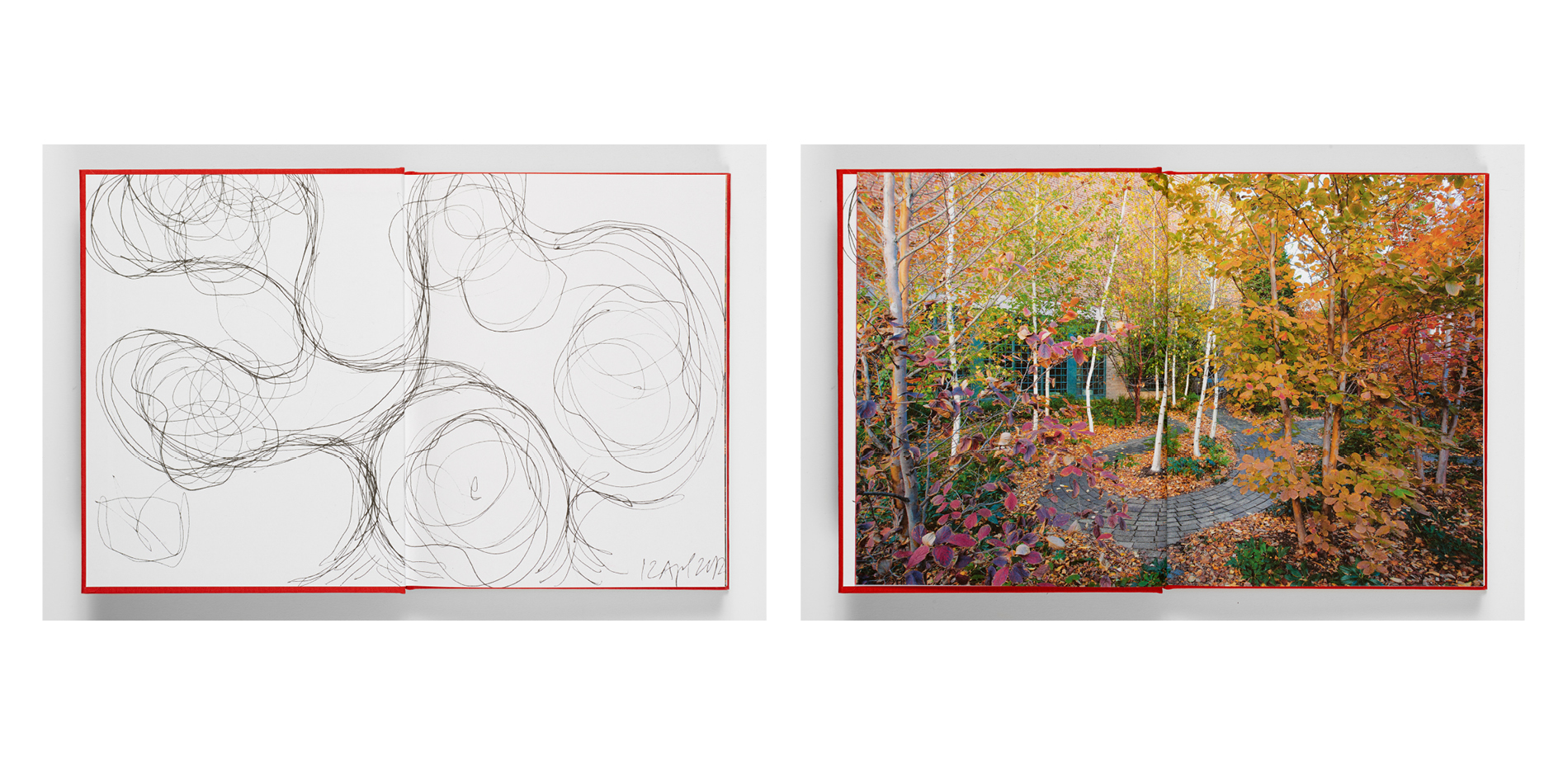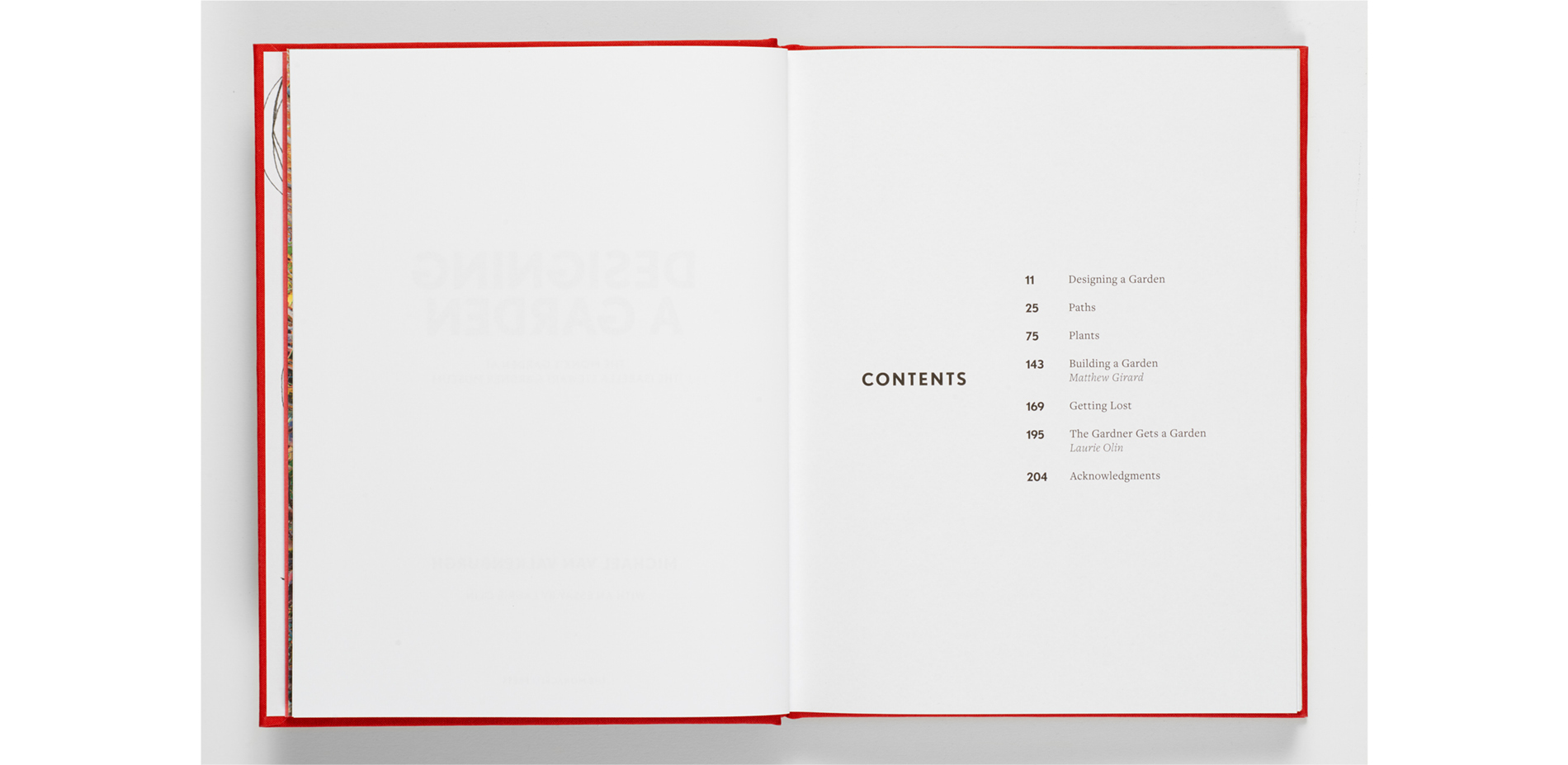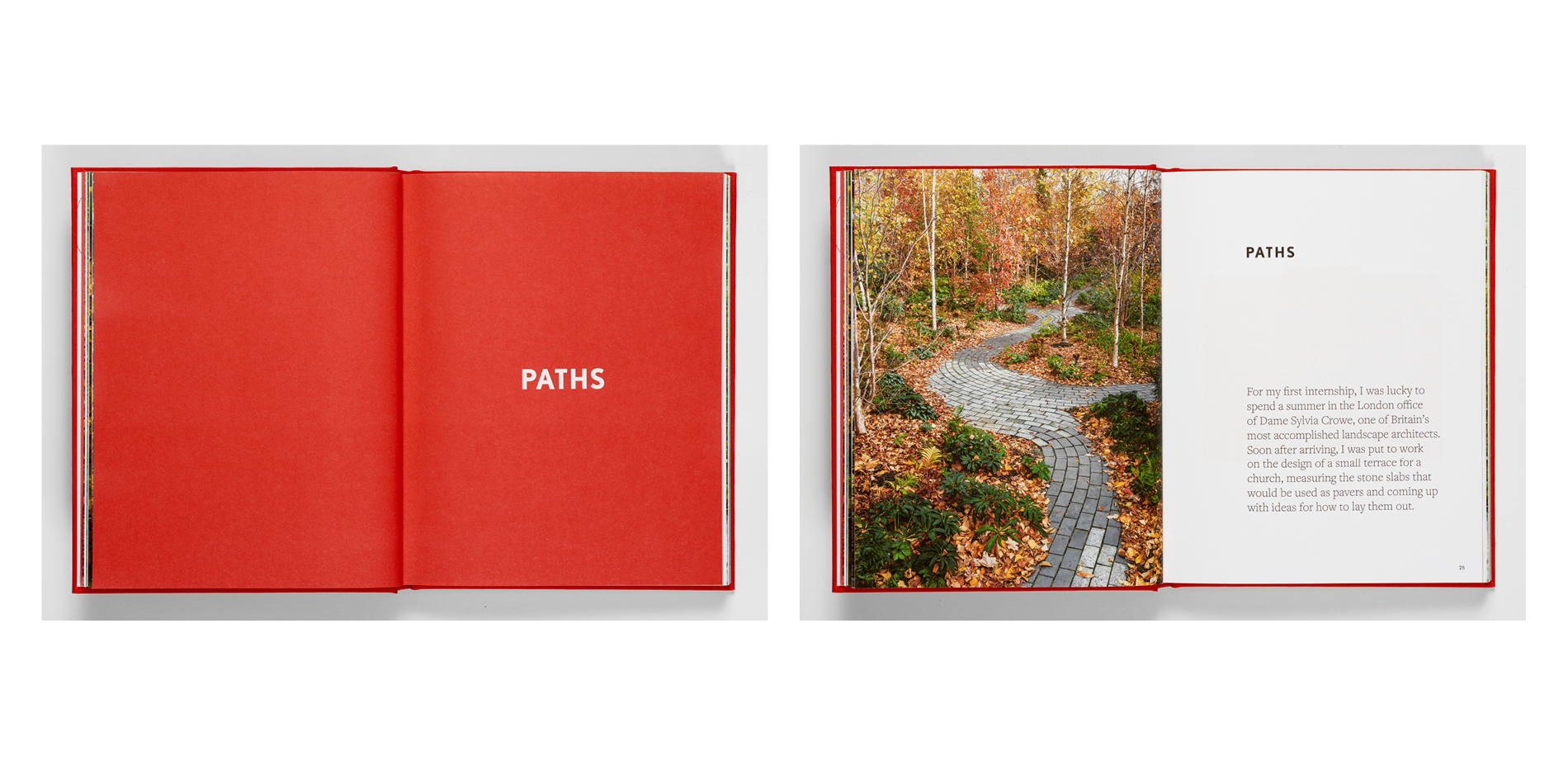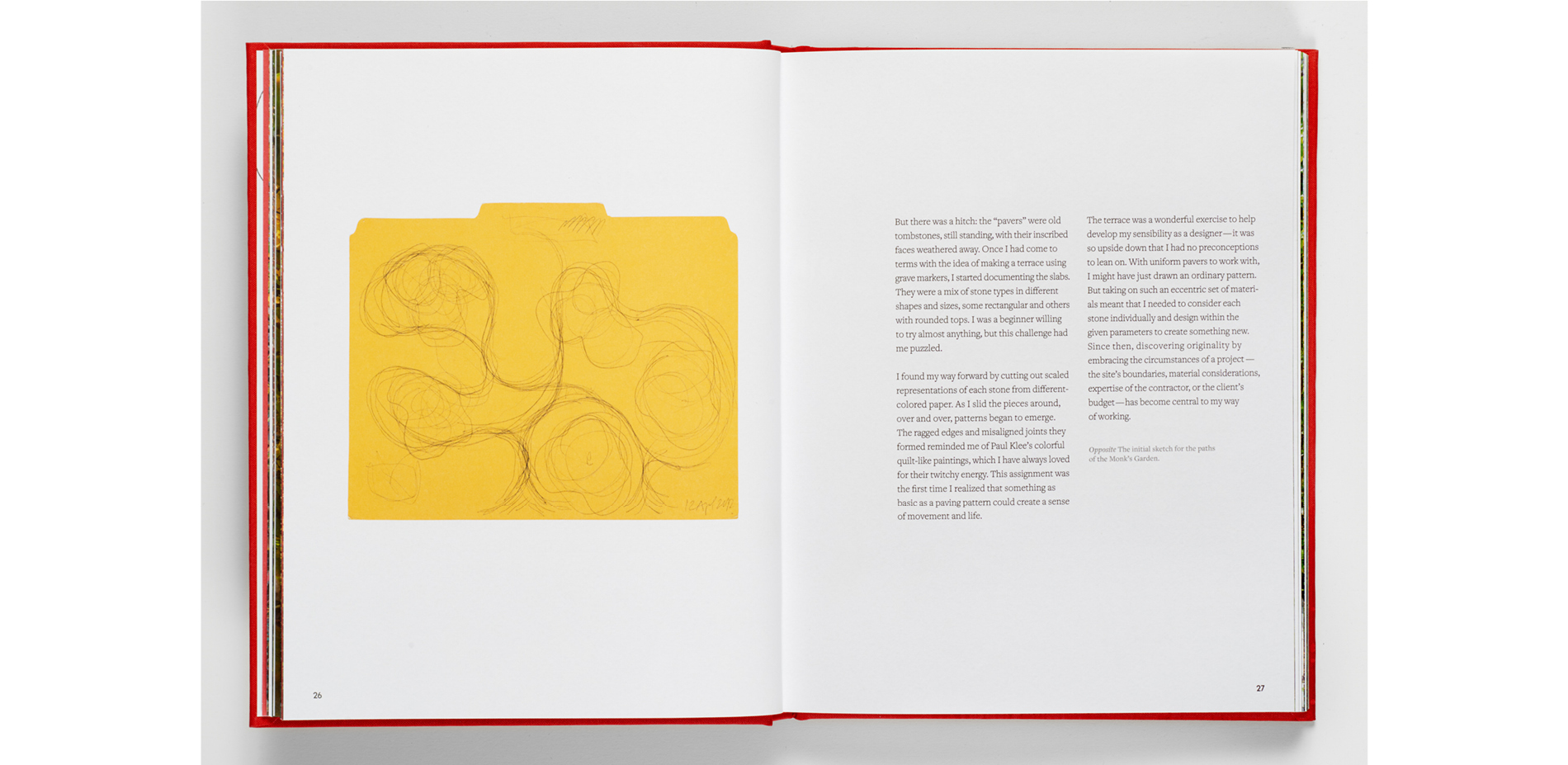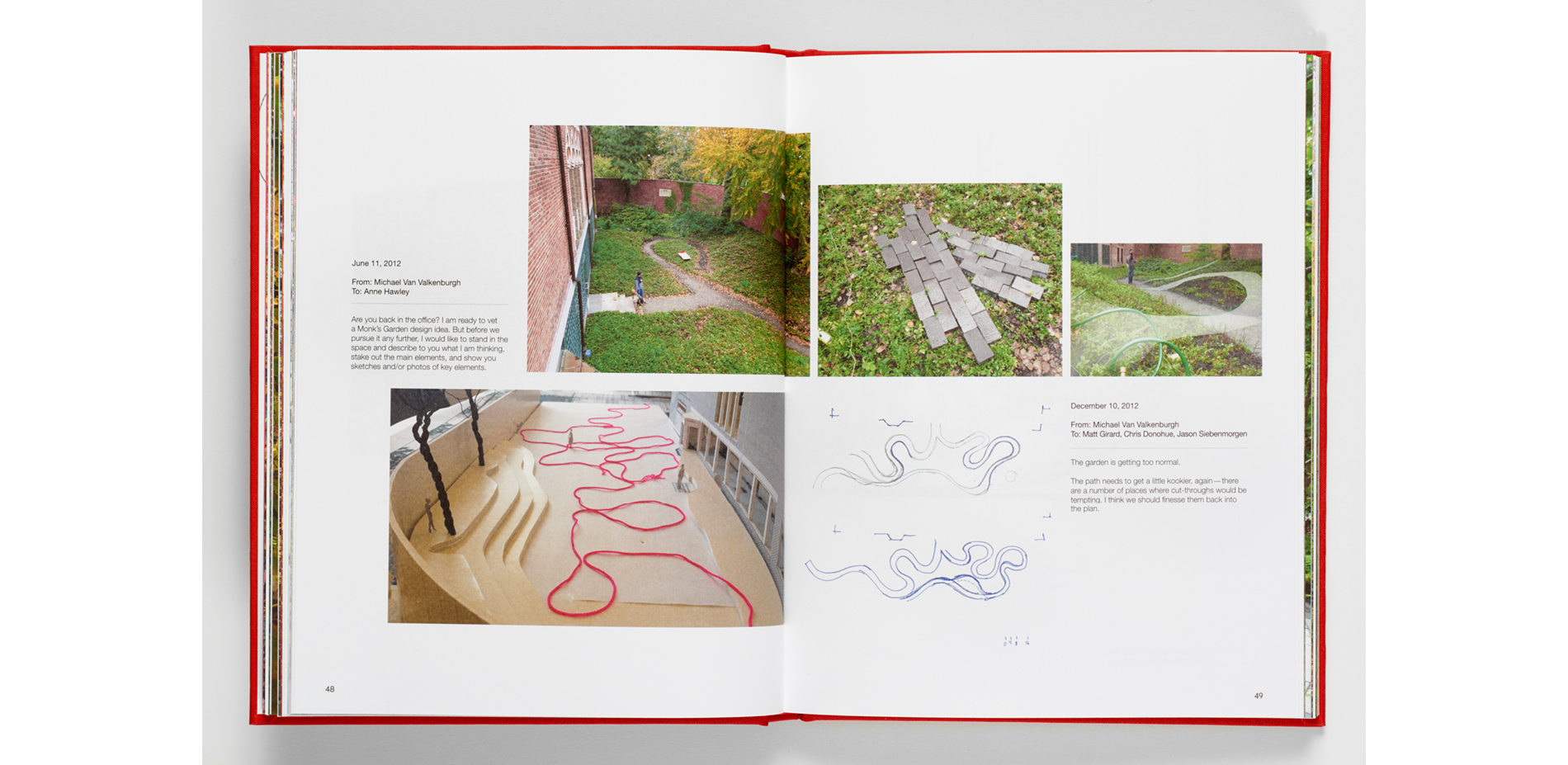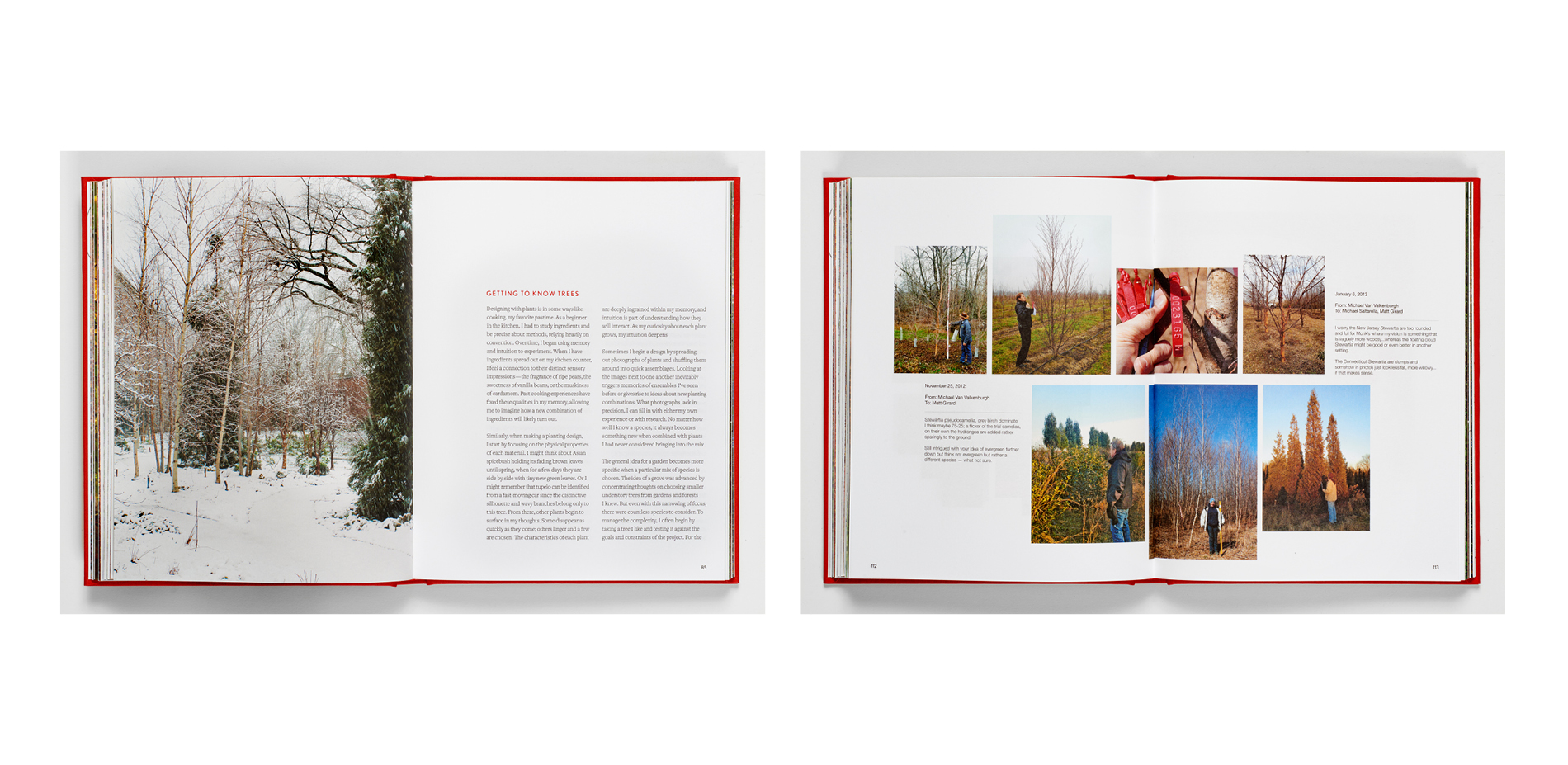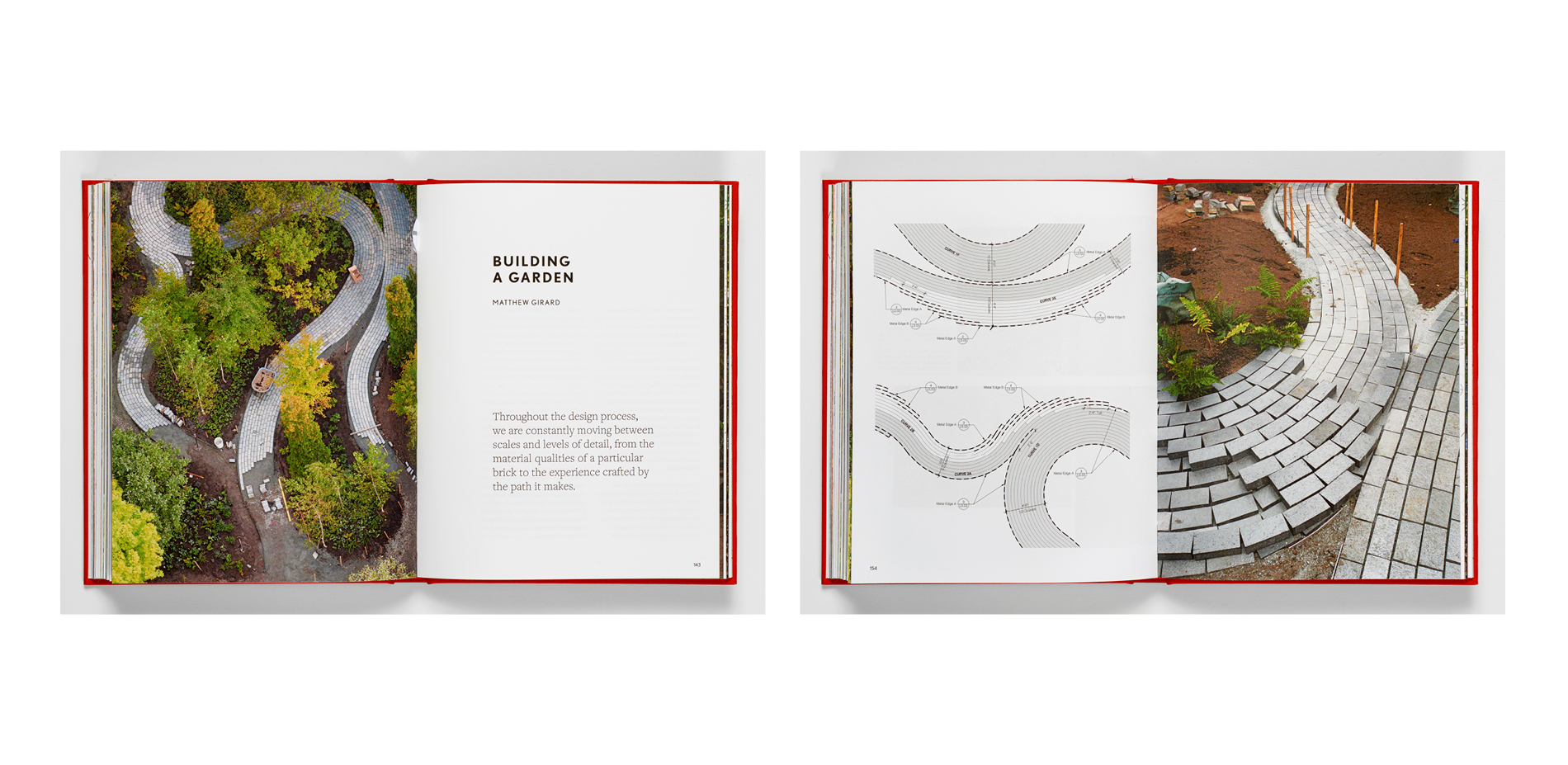Designing a Garden: Monk’s Garden at the Isabella Stewart Gardner Museum
Honor Award
Communications
Brooklyn, New York, United States
Michael Van Valkenburgh Associates, Inc.
Client: Michael Van Valkenburgh Associates
A landscape architect’s design process isn’t always linear, and this book illustrates the many meanders Michael Van Valkenburgh took on his journey to transform a leftover and lackluster side garden into a delightful transition between the original 1901 building and its 2012 addition. Documented in correspondence, sketches, and gradually more refined drawings—all interspersed with Van Valkenburgh’s first- hand account of their development—Monk’s Garden becomes not just another book for the museum’s gift shop, but a master class offering the full insight of how landscape architects approach, agonize over, and finally arrive at solutions that fit their sites so precisely that they feel like they’ve been there all along.
- 2020 Awards Jury
Project Credits
Cara Walsh, Book Designer
Michael Van Valkenburgh, Author
Laurie Olin, Author
Matthew Girard, Author
Chris Donohue, Coordinator
Aidan Cronin, Coordinator and Editing Team
Alec Spangler, Editing Team
Jane Lee, Editing Team
Fred Bernstein, Editing Team
Elizabeth Felicella, Photographer
Izabela Riano-Levy, Photographer
Scott Shigley, Photographer
Alex MacLean, Photographer
Lexi Van Valkenburgh, Photographer
Richard Conte, Photographer
Neil Budzinski, Photographer
Alexander Luckmann, Editing Team
Project Statement
There are many books about gardens, but few trace the entire process of figuring out what a garden will be. Designing a Garden offers an unprecedented window onto the hard to describe considerations that go into making a garden. It presents the progression of the design for the Monk’s Garden in an entirely transparent way, through sketches, models, mock-ups, plans, photographs, construction drawings, and correspondence. The book builds on Monk’s Garden, a visual record of the design process initially compiled to accompany an exhibition at the Isabella Stewart Gardner Museum, which won an ASLA Honor Award in 2014. Designing a Garden’s virtuosic essays and innovative graphic design combine to give a clear example of how a landscape comes together and to encourage younger landscape architects to make gardens as a way to learn more about their craft.
Project Narrative
Designing a Garden: Monk’s Garden at the Isabella Stewart Gardner Museum
In Designing a Garden, Michael Van Valkenburgh takes the reader along the journey of designing the Monk’s Garden at the Isabella Stewart Gardner Museum in Boston. In the process, Michael reveals the inner workings of his design practice and draws upon knowledge gained over decades of landscape-making. The book dispels notions of the strictly linear design process that is sometimes crafted specifically for design presentations, providing glimpses of the unexpected turns and ideas that are tried, tested, rejected, and reworked over the course of making a landscape. The essays examine the many design directions explored during the design process. Many of these ideas were quickly rejected, but they informed more fruitful decisions. These considerations also include Michael’s personal experiences which contribute to the depth of the landscape’s built form.
Designing a Garden developed from an earlier publication, titled Monk’s Garden, that won an ASLA Honor Award in 2014 for the Communication category. Monk’s Garden was initially made to accompany an exhibition at the Gardner Museum. After the exhibition, the book became a useful tool within the MVVA office as an example of how to advance a landscape design. MVVA used it so much that it became evident that this document had valuable lessons to teach about the design process in general and that it could be expanded in a way that would be accessible to an even wider audience.
Design and Organization
Designing a Garden is organized around five essays: “Designing a Garden,” “Paths,” “Plants,” “Building a Garden,” and “The Gardner Gets a Garden.” These essays complement visual artifacts of the design process. Images of sketches, mock-ups, and construction progress photos lead the reader along the way. A full plant list follows the essay title “Building a Garden,” written by MVVA project manager Matt Girard. The closing essay is written by acclaimed landscape architect Laurie Olin, who describes his impressions of a walk through the garden shortly after its completion. The book closes with a photo essay of the finished garden that immerses the reader in the paths, plants, and space of the garden. The book invites the reader to feel engaged in the highly specific and sometimes personal process of making a garden, and to enjoy the finished product.
Cara Walsh, a book and landscape designer, designed the book to present the messy process of making a garden in a format that is accessible to experienced landscape architects and novice designers alike. The goal of the book design was to support and enhance the written text with rich images that reveal the design process, not just as a repository for everything that took place, but as a thoroughly considered step-by-step example of how a garden is made. Full-bleed images immerse the reader in the garden’s lushness, while cleverly formatted spreads pair process images with text from emails exchanged throughout the building of the garden to pull back the curtain on how the project took shape. The structure of Designing a Garden illustrates the nuts and bolts of making the Monk’s Garden and weaves in information about the thinking behind the design decisions and the creative process. The book is paced to achieve a rhythm that allows readers to contemplate the written words and delight in the powerful images. It seeks to illuminate how and why gardens are made, in addition to celebrating the finished product. In the process, the book mounts a case for the ongoing relevance of garden-making—not just as objects of admiration or status, but as places to be enjoyed and as human creations that have inspired a continuous process of learning, testing, retrying, and caretaking.
Aspirations
The book has two primary purposes. The first is to provide an example for new designers of how a landscape design comes together in a clear and detailed format. Rather than drawing general lessons from his body of work, Michael Van Valkenburgh felt that the best way to do this would be to follow a single project from inception to completion, allowing the reader to inhabit the inspiring and unpredictable world of a garden yet to be realized. A garden presents the most manageable scale and clear intention out of all landscape project types, and the Monk’s Garden’s powerful clarity of purpose embodied within its paths and plants made it the perfect case study to examine.
The second purpose of Designing a Garden is to inspire young landscape architects to make gardens as a way to learn about their craft. The best way to learn landscape design is by doing, but because of the complexity, cost, space, and time requirements for many project types, it can be difficult for young designers to find opportunities to see the design process through from start to finish. This book argues for the importance of fighting to design and build projects, however small they may be.
Audience and distribution
The audience that inspired the creation of this book is young designers and landscape students, but the book’s writing and format makes it accessible to all people interested in design and landscape. Designing a Garden is widely available in art and design-oriented bookstores as well as online, maximizing the book’s reach. This first edition includes 4000 printed copies.
The Garden
MVVA was hired in September 2011 to design a new Monk’s Garden, following an expansion that more than doubled the size of the Isabella Stewart Gardner Museum. Surrounded by tall, brick walls on three sides and open to the Renzo Piano-designed new wing to the south, the garden has existed in the same location but in a variety of forms since Isabella Stewart Gardner founded the museum in 1903. Ann Hawley, the museum director at the time, wanted the garden to be a gift to visitors: a place that would lure them in and surprise them. After spending the morning touring the museum, Michael began to think of the Monk’s Garden as a counterpoint to the focused thought inside; a place to get lost and relax.
The design of the Monk’s Garden offers an immersive experience within the narrow, peripheral site through dense planting and winding paths. The book examines these two aspects specifically within two separate sections, but always considers one in respect to the other, just as they were throughout the design process. The garden’s walled enclosure means it is not visible from the street. Its intertwining paths and plants generate an intense feeling of interiority that leads to contemplation while wandering along its winding route.
Reception
Designing a Garden has been included on year-end lists and received positive reviews from a number of media outlets, including the Chicago Tribune, Metropolis, and ASLA’s The Dirt.
Aaron King wrote in The Dirt, “Designing a Garden, the new book written by Michael Van Valkenburgh, FASLA, is a lucid and candid examination of the process of designing and constructing a single project: the Monk’s Garden at the Isabella Stewart Gardner Museum in Boston.”
On Garden Design Online, Jane Berger wrote, “If you haven’t seen the Monk’s Garden at the Isabella Stewart Gardner Museum in Boston, you need to plan a trip there to experience a masterpiece of mystery that will spur you to contemplate the design for months to come. In Designing a Garden: Monk’s Garden at the Isabella Stewart Gardner Museum, Landscape Architect Michael Van Valkenburgh takes you through every detail of the design process — a lesson you’ll refer to time and time again.”
Blair Kamin, of the Chicago Tribune wrote, “In this delightful little book, [Michael Van Valkenburgh] chronicles the development of…the so-called “Monk’s Garden” at the Isabella Stewart Gardner Museum, in Boston…You’ll never see straight and curved paths — or the “air” between a tree’s branches or leaves — in the same way.”
Products
- Fermob
- Irrigation Consulting Inc.
- Rain Bird
- Read Custom Soils
- Endicott Clay Products Company
- Tillet Lighting Design Associates
- Hartney Greymont
- Nitsch Engineering
- Pine and Swallow Environmental
Plant List:
- Paperbark Maple
- Gray Birch
- Katsura Tree
- Saucer Magnolia
- Japanese Stewartia
- Hetz Wintergreen Arborvitae
- Snakeroot
- Black Negligee Snakeroot
- Bugleweed
- Canadian Wild Ginger
- European Wild Ginger
- Leadwort
- Autumn Fern
- Wood Spurge
- Snowdrop
- Sweet Woodruff
- Stinking Hellebore
- Christmas Rose
- Hybrid Hellebore
- Long Yellow Daylily
- Orange Daylily
- Sharp-Lobed Hepatica
- Hosta
- Climbing Hydrangea
- Martagon Lily
- Surprise Lily
- Creeping Mazus
- Green-Eyed Lady Daffodil
- Pheasant's Eye Daffodil
- Small Cup Narcissus
- Triandrus Narcissus 'Thalia'
- Sensitive Fern
- Cinnamon Fern
- Dwarf Solomon's Seal
- Christmas Fern
- Periwinkle

